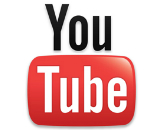 YouTube is making a change to its Content ID system that may lead to a spike in the number of blocked videos. In a blog post, the video platform announced that it would no longer let rightsholders use its manual claiming tool for monetizing “creator videos with very short or unintentional uses of music.” Instead of letting them claim all revenue in those instances, YouTube will let rightsholders prevent any monetization of the video or block the content. The new policy will take effect in mid-September.
YouTube is making a change to its Content ID system that may lead to a spike in the number of blocked videos. In a blog post, the video platform announced that it would no longer let rightsholders use its manual claiming tool for monetizing “creator videos with very short or unintentional uses of music.” Instead of letting them claim all revenue in those instances, YouTube will let rightsholders prevent any monetization of the video or block the content. The new policy will take effect in mid-September.
The support page for Content ID manual claiming defines unintentional use as cases where “the content was not added to the video by the creator” and “there is no interaction between the creator and the content.” That covers cases such as music playing in a passing car or a television playing in another room. The page did not set a limit on what constitutes “a very small portion” of a video, but said that combined length of multiple segments in a single asset could be considered.
The post emphasized that the change is only for instances of manual claiming, not for claims made by the Content ID match system. This change follows one from July where YouTube started requiring timestamps in its manual claims system. It seems that update revealed a trend toward using manual claims for very short music clips, which takes all revenue from that video away from the creator and gives it to the copyright claimant. The timestamps helped video creators to address those manual copyright claims, including by editing out protected audio.
